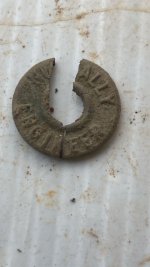Prime
Full Member
I'm new to this part of treasure hunting, I've not dealt with caves before other than on tourist sites. The entrance to the cave I seek is likely covered in dense forest, or possibly underwater by now. Does anyone know of any advancements in technology that could aid me in finding either? I've got a drone that I could fly over the area to see if I could spot anything, possibly when foliage has withered away from trees. Any other advice? If I were to find this place, I plan on using a device to monitor the air quality and any gas emissions.
I wouldn't mind seeing a sticky here about the different tools that are available out there, from affordable to expensive for this type of expedition.
Cheers,
Prime
I wouldn't mind seeing a sticky here about the different tools that are available out there, from affordable to expensive for this type of expedition.
Cheers,
Prime
Last edited:




